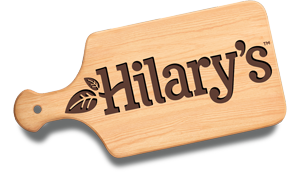Nutrition Spotlight: Pulses

Spilling the Beans on the Legume Family
The United Nation (UN) has declared 2016 the International Year of Pulses. While the word pulses is commonly used in the medical profession, it is also a vital food group that includes beans, lentils and dried peas. If you ever keep your finger on the pulse of the culinary world, plant-centric eats are budding up in supermarkets, upscale restaurants, street cafes across the country. This guide breaks down what you need to know about this humble food family and how to incorporate more plant-based protein into your diet.
Nutrient Powerhouse
According to the Food and Agriculture of the UN, pulses are a subgroup of the legume family (also known as the pea family) with dry and edible seeds. Popular pulses are navy beans, kidney beans, chickpeas, lentils and split peas. They were once considered peasant food in some cultures because they are cheap sources of protein and thought to be nutritionally inferior to animal protein. However, increasing scientific research has shown that pulses can help reduce the risk of heart disease, certain cancers, iron deficiency anemia as well as promoting bone health and cognitive function.
Pulses are packed with plant protein, fiber, iron, zinc and B vitamins such as folate. At 20 – 25 grams per cup, pulses are a rich source of plant-based protein. Pair them with grains, legumes, nuts and seeds (for vegetarians) or meat for a complete protein profile. Zinc plays an important role in maintaining a healthy immune system and wound healing process. Folate is especially crucial during pregnancy in preventing birth defects.
Weight Loss Booster
Studies show that people who consume more pulses in the their diet have an easier time with weight loss and maintaining a healthy body weight. The rich sources of plant protein and fiber promote feelings of fullness and in turn may stop people from eating too many calories. Eating adequate amount of protein also helps to maintain and gain lean muscle, which boosts your metabolism and calorie burning potential! So go ahead and celebrate Meatless Mondays like you mean it!
Kitchen All-star
The possibilities of cooking with pulses are endless! From breakfast, lunch, dinner and snacks, one can nosh on pulses all day long. Since most of them come in canned or cooked, it can shave off a significant amount of prep time in the kitchen. Additionally, they are inexpensive protein options compared to meats. Pulses take on the flavor of the dish so be adventurous and explore different spices and seasoning combinations! They make both your stomach and wallet happy!
1) Beans – Hilary’s Burgers and Bites (Adzuki, Black Rice, and Mediterranean)! Vegetarian chili, five bean salad
2) Chickpeas – hummus (any variety you like), roasted chickpeas (salad topper or an appetizer), chickpea soup, curry and tabbouleh
3) Dried peas – split pea soup, hummus made with cooked split peas, curry
4) Lentils – lentil soup, sprinkle cooked lentils in salad, hummus made with lentils
The once overlooked food group is now taking center stage in the culinary world. With its versatility, quick cooking time and affordability, pulses are sure to please everyone’s palate from omnivores, flexitarian, vegetarians to vegans!

Claire is a Registered Dietitian with a diverse clinical experience in neonatal, pediatric and adult nutrition. Her current role as the Health Promotion Dietitian at the air force base allows her to apply clinical knowledge to help the active duty population to prevent chronic illnesses. She is passionate about pediatric nutrition, plant-powered eating and communicating science-based nutrition information to the public. Claire is a member of the Kids Eat Right Campaign helping to end child obesity and marketing co-chair for the Colorado Academy of Nutrition and Dietetics. Having lived in Southern California for over 15 years, she recently moved to the equally sunny state of Colorado.

